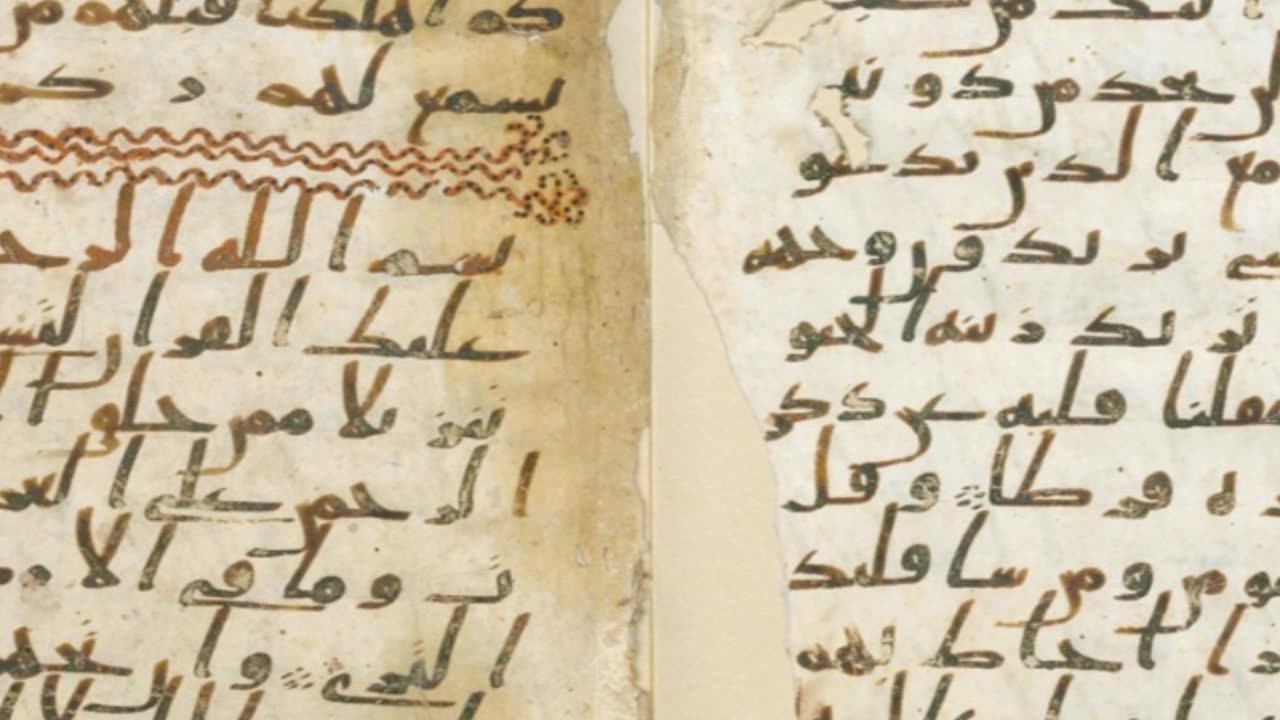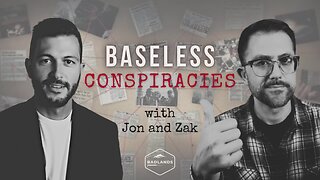Premium Only Content

The Birmingham Quran Manuscript 03
The radiocarbon dating of the Birmingham Qur'an fragments, which include parts of Surahs 18 to 20, suggests with 95.4% accuracy that the parchment dates from 568-645 AD.
This is potentially 5 to over 80 years before the traditional Islamic account of the compilation of the Quran in 650 to 653 AD.
In Islamic tradition, the compilation of the Quran is attributed to the third caliph, Oothman. However, if the Birmingham Qur'an fragments are indeed part of the original Othmanic Codex, and date from 568-645 AD, it would suggest that the Quran was compiled and distributed earlier than previously thought.
This discrepancy raises questions about the accuracy of Islamic historiography.
The Birmingham fragments contain parts of the earlier so-called “Meccan Surahs” 18 to 20. From the end of surah 18 to the beginning of 20, in the order that is common today.
They follow Uthmanic logic with the non-chronological order of the surahs, which are lengthwise, except the first surah of the Koran, a polemic or curse upon Jews and Christians known as the al-Fatiha, which has 7 verses, and is of great importance, forming part of the main Islamic prayer.
The Birmingham Quran fragment is written in an early Arabic script known as Hijazi.
The concept of the Hijazi script, referring to the earliest known manuscripts of the Quran from the 7th-8th centuries, has been challenged by Estelle Whelan. She argues that defining a distinct "Hijazi script" based primarily on the form of the letter aleph and archaic explanations is a "scientific artefact" or artificial construction rather than an accurate representation of the early Quranic manuscripts.
Whelan contends that the traditional narrative of the Hijazi script being a distinct calligraphic style originating in the Heejaz region is oversimplified and lacks solid evidence. She suggests that the variations observed in early Quranic manuscripts may not necessarily represent a coherent regional script but rather reflect the natural diversity and evolution of Arabic writing during that period.
Her critique opposes the notion that the Hijazi script can be clearly defined and distinguished from other contemporaneous Arabic scripts based solely on paleographic features like the shape of the aleph. She argues that the explanations provided for the origins and characteristics of this script are rooted in traditional Islamic accounts, which may not align with a more critical examination of the manuscript evidence.
The fragments exhibit some shawādhdh in terms of variant spellings, verse numberings etc. that were likely acceptable variations before the Uthmanic standardisation.
The radiocarbon dating places it potentially before the traditional birth year of Mohammed.
There are differences in orthography and verse separations compared to the standard text. Early Quranic manuscripts often had variations before standardisation, despite false apologetics claims of a single, unaltered text, perfectly preserved exactly as sent down to Mohammed.
There have been multiple Quran standardisation efforts, a task which would be unnecessary if the Quran were 'perfectly preserved'.
-
 1:19:29
1:19:29
Game On!
13 hours ago $4.01 earned8,000 Subscriber Celebration Stream!
22.2K -
 28:30
28:30
Degenerate Jay
15 hours ago $3.99 earnedThe Rejected 007 Quantum Of Solace Ending That Would Have Changed James Bond
33.5K6 -
 11:37
11:37
ARFCOM Reviews
14 hours ago $2.03 earnedNew Budget Comp'd Carry || Canik MC9 PRIME
24K4 -
 8:22
8:22
Rethinking the Dollar
17 hours agoSilver vs CBDCs: The Battle for Financial Freedom
27.9K6 -
 55:15
55:15
MTNTOUGH Fitness Lab
18 hours agoTJ Dillashaw: Embracing Fear as a Privilege | MTNPOD #112
18.8K2 -
 12:24
12:24
T-SPLY
23 hours agoKamala’s COMEBACK FLOPS as Dems DITCH Her!
19.5K12 -
 47:42
47:42
Steph & Kayls
22 hours ago $0.67 earnedReflecting On How Being Spicy Creators Changed Our Relationship, Life And Bank Account | Ep. 2
14.9K5 -
 7:03
7:03
DropItLikeItsScott
23 hours ago $1.20 earnedFosTech Drone Predator Pistol Suppressed
22.6K -
 3:31:01
3:31:01
FreshandFit
12 hours agoAfter Hours w/ Dan Cates
129K160 -
 1:37:17
1:37:17
Badlands Media
12 hours agoBaseless Conspiracies Ep. 128: The Accelerationist Cults Grooming Kids into Terrorism with BX
166K49